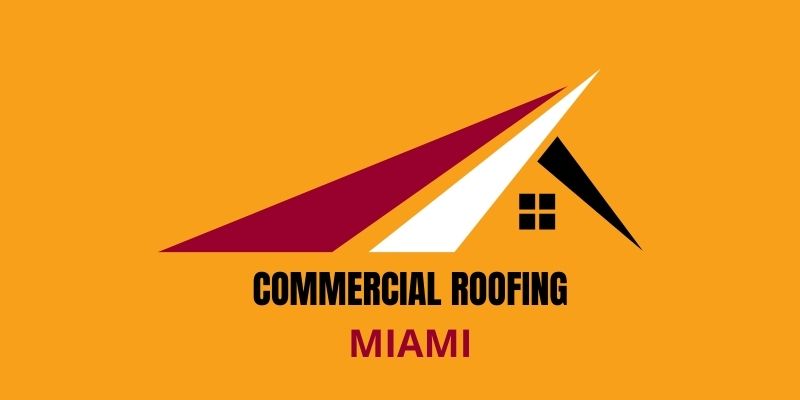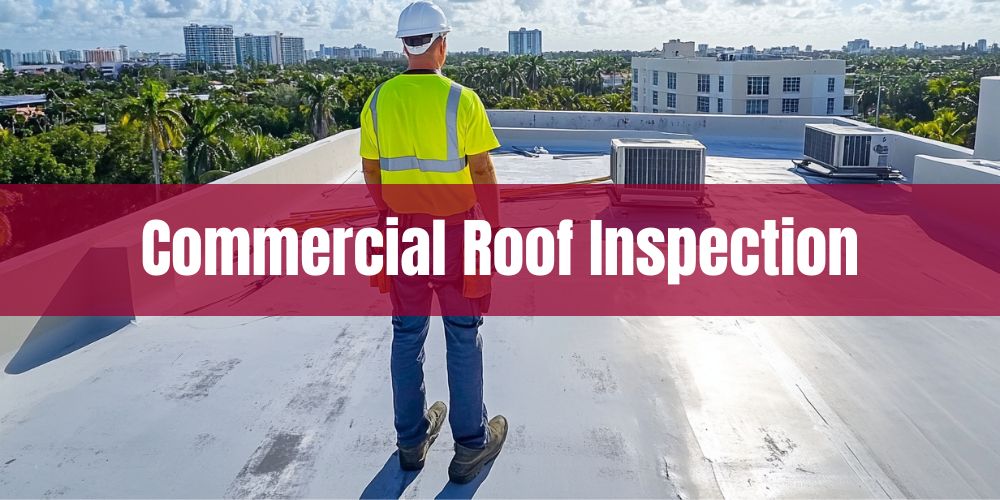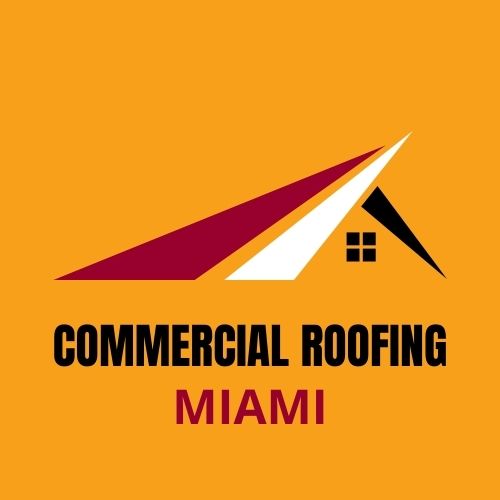A commercial roof inspection involves a thorough examination of the roofing systems on commercial properties to identify potential issues or damage. It aims to assess the overall condition, ensure proper drainage, and check for signs of wear or structural problems. This inspection is crucial for maintaining the roof's integrity and ensuring the safety and functionality of the commercial building. Regular inspections can help prevent costly repairs and extend the life of the roof. Commercial Roofing Miami provide commercial roof inspection services across the Miami, Florida area.
What Are Commercial Roof Inspections?
Commercial roof inspections are thorough evaluations of the roof systems used in commercial properties to ensure proper function, longevity, and compliance with building codes. These inspections involve a detailed visual examination of the roof surface, underlying structures, and any roofing materials to identify any signs of damage or deterioration. Roofing professionals assess issues such as leaks, ponding water, damaged flashing, or clogged drainage systems that could lead to costly repairs if not addressed. The process may also include thermal imaging technology to detect moisture intrusion or insulation defects that are not visible to the naked eye. Regular roof inspections are vital for maintaining the structural integrity and energy efficiency of commercial buildings, helping to extend the roof's lifespan and reduce long-term expenses. They also help property owners and managers plan for future maintenance needs and budget for necessary repairs or replacements.
In Miami, Florida, where the climate includes high humidity, frequent rain, and intense sun, commercial roof inspections pay extra attention to moisture-related issues and UV damage prevention. Inspectors focus on ensuring that roofs are equipped to handle Miami’s weather patterns by ensuring proper drainage and reflective coatings to mitigate heat absorption.
Have a question about an upcoming project?
How Often Should Commercial Roofs Be Inspected In Miami?
Commercial roofs in Miami should be inspected at least twice a year, preferably in the spring and fall. Miami's unique climate, characterized by heavy rainfall, high humidity, and hurricane susceptibility, necessitates regular inspections to maintain roof integrity and prevent costly damage. These inspections help identify issues such as leaks, structural damage, and material wear, ensuring the roof's long-term performance and safety.
- Climate Vulnerability: Regular checks are crucial due to Miami's heavy rain and hurricane risk.
- Preventative Maintenance: Early issue detection minimizes repair costs and prolongs roof lifespan.
- Material Type: Different roofing materials require specific inspection schedules for optimal maintenance.
- Building Usage: High-traffic buildings might necessitate more frequent inspections for safety concerns.
- Insurance Requirements: Some policies may dictate the frequency of required roof inspections.
1. Climate Vulnerability: Regular checks are crucial due to Miami's heavy rain and hurricane risk
Climate vulnerability refers to the susceptibility of roofing systems to damage from severe weather conditions, necessitating frequent inspections to ensure the safety and integrity of commercial roofs in high-risk areas like Miami. Frequent inspections are essential for commercial roofs in Miami to identify and remedy any damage caused by extreme weather events, such as heavy rain and hurricanes, which can lead to costly repairs or replacements if left unchecked. Regular maintenance helps ensure the roof can withstand the stresses imposed by Miami's challenging climate, thereby extending its lifespan and maintaining its performance.
Given Miami’s frequent exposure to intense weather conditions, such as high winds, torrential rain, and potential hurricane impacts, commercial roofs must be robust and well-maintained. Proactive measures, such as regular inspections and timely repairs, are crucial to prevent water infiltration and structural damage. Additionally, investing in resilient roofing materials and technologies that can better resist harsh weather conditions will provide greater long-term value and reduce the risk of unexpected failures and operational disruptions.
2. Preventative Maintenance: Early issue detection minimizes repair costs and prolongs roof lifespan
Preventative maintenance involves regular inspections and upkeep of commercial roofs to identify and address issues before they escalate into costly repairs, ultimately extending the roof's service life. Regular roof inspections in Miami, particularly given the city's high humidity and severe weather conditions, are crucial for detecting potential problems early. This proactive approach ensures minor issues are addressed promptly, minimizing damage and repair expenses while extending the roof's lifespan.
By identifying areas of wear and tear or potential leak sources during inspections, building owners can implement repairs that prevent minor issues from developing into major, costly problems. Additionally, the frequent exposure to storms and intense sunshine in Miami underscores the necessity of maintaining roof integrity through timely maintenance. Ensuring that drainage systems are clear and repairing any minor damage will prevent more serious structural issues and avoid unexpected expenses.
3. Material Type: Different roofing materials require specific inspection schedules for optimal maintenance.
Different roofing materials in commercial buildings each have unique characteristics that necessitate tailored inspection schedules to ensure longevity and optimal performance. In Miami, the climate plays a significant role in determining how often each type of commercial roof should be inspected. The high humidity and frequent storms can have varying effects on materials such as modified bitumen, metal, and single-ply membranes, necessitating adjustments to traditional inspection schedules. Understanding these differences helps in planning appropriate maintenance activities to mitigate the impact of Miami’s climate.
Regular inspections allow facility managers to spot issues specific to each material, such as rust on metal roofs or seam failures in single-ply membranes. Proactive maintenance based on material types prevents premature failure and extends the roof's life, which is critical in reducing long-term repair costs and disruptions. This approach not only protects the investment in roofing but also ensures that the building remains safe and functional for its occupants.
4. Building Usage: High-traffic buildings might necessitate more frequent inspections for safety concerns.
High-traffic buildings experience significant usage and footfall, which can exacerbate stress and wear on the roof structure, potentially leading to safety hazards that require regular monitoring. In Miami, the combination of heavy rainfall, intense sun, and high humidity, along with the stress from continuous foot traffic, necessitates more frequent roof inspections for high-traffic buildings to ensure safety and structural integrity. Regular inspections help identify and address issues early, preventing minor wear from escalating into major, costly repairs.
Moreover, neglecting regular inspections in such environments can result in expensive unforecasted repairs, causing disruptions to business operations and negatively impacting revenue. Planned maintenance schedules for roofs in high-traffic buildings allow for timely interventions, maintaining safety standards and prolonging the lifespan of the roofing system. Implementing a proactive inspection regimen reduces the risk of unexpected system failures and promotes a safer, more reliable commercial space.
5. Insurance Requirements: Some policies may dictate the frequency of required roof inspections
Insurance requirements refer to the stipulations within a policy that determine how often a commercial roof must be inspected to maintain coverage and reduce risk. Miamis climate can pose unique challenges for commercial roofing, given its susceptibility to heavy rains, strong winds, and intense heat. The stipulations in insurance policies are vital as they ensure that commercial roofs are regularly checked for wear and damage, minimizing the risk of water intrusion and structural failure. Regular inspections are crucial in preserving both the roof's condition and the validity of insurance coverage in such a delicate climate.
By adhering to prescribed inspection frequencies, businesses can better mitigate potential damage and costly repairs, while also avoiding policy violations that may lead to denied claims. Frequent inspections aid in identifying and addressing minor issues before they escalate, thus extending the roof’s lifespan. This proactive approach is especially important in hurricane-prone areas such as Miami, ensuring that commercial roofs remain resilient and compliant with insurance requirements.
What Are Miami-Specific Challenges In Commercial Roof Inspections?
Miami's unique weather patterns and geographical location present specific challenges for commercial roof inspections. The hot, humid climate and frequent storms create potential issues such as mold growth, structural damage, and material degradation. These factors necessitate regular and comprehensive inspections to maintain the integrity and longevity of commercial roofing systems.
- Hurricane Risk: Frequent storms demand roofs withstand high winds and heavy rainfall.
- Heat and UV Exposure: Extreme heat and sun degrade roofing materials over time.
- Humidity and Moisture: High humidity accelerates mold, mildew growth, and water damage.
- Salt Air Corrosion: Proximity to the ocean increases risk of metal component corrosion.
- Flat Roof Drainage Issues: Poor drainage exacerbates during Miami’s heavy rains, leading to water pooling.
1. Hurricane Risk: Frequent storms demand roofs withstand high winds and heavy rainfall
Hurricane risk refers to the potential damage to commercial roofs caused by strong winds and heavy rainfall during frequent storms, necessitating durable roofing systems capable of withstanding such extreme weather conditions. Hurricane risk is a major consideration for commercial roof inspections in Miami due to its frequent exposure to tropical storms and hurricanes. Roofs in this area must be evaluated for their resistance to high winds and water intrusion to prevent structural damage and ensure occupant safety.
Commercial buildings must employ robust roofing materials and construction techniques capable of withstanding hurricane forces. Regular inspections ensure that any vulnerabilities are identified and addressed promptly, such as reinforcing roof edges and securing loose materials, thereby reducing potential damage during severe weather events. Additionally, investing in more resilient roofing options like modified bitumen or reinforced single-ply membranes can provide enhanced protection against the elements.
2. Heat and UV Exposure: Extreme heat and sun degrade roofing materials over time.
Heat and UV exposure refer to the impact of prolonged sun and high temperatures on roofing materials, leading to their degradation and reduced longevity. The intense sun and high temperatures characteristic of Miami create a challenging environment for commercial roofs, as they exacerbate the risks associated with heat and UV exposure. Continuous exposure to these elements accelerates the aging process of roofing materials, which can lead to compromised structural integrity and increased maintenance costs for building owners.
To combat these issues, selecting materials specifically designed to withstand Miami’s climate is essential. Roofs can benefit from UV-resistant coatings that reflect sunlight and reduce temperature-induced stress. Regular inspections and maintenance further mitigate the risks, ensuring prompt identification and repair of sun-related damage before it leads to significant issues.
3. Humidity and Moisture: High humidity accelerates mold, mildew growth, and water damage
High humidity in commercial roofing environments can lead to accelerated growth of mold and mildew, potentially causing significant water damage to the roofing system. Humidity and moisture are critical factors for commercial roof inspections in Miami, where the subtropical climate exacerbates these challenges. The presence of mold and mildew not only compromises the structural integrity of the roof but also impacts indoor air quality, posing health risks to building occupants.
Regular roof inspections help identify early signs of mold and mildew, preventing costly repairs and water damage. Moisture barriers and proper ventilation systems can mitigate these risks by reducing humidity levels in the roofing assembly. Moreover, choosing roofing materials that are resistant to mold and moisture can further safeguard the building against long-term damage in Miami's humid climate.
4. Salt Air Corrosion: Proximity to the ocean increases risk of metal component corrosion.
Salt air corrosion is the accelerated degradation of metal components caused by the presence of salt particles in the moisture-laden air near coastal regions. In Miami, commercial roofing faces unique challenges due to its coastal location, making it prone to salt air corrosion. The salty environment leads to rust and structural weakening of metal roofing materials, which can compromise the integrity and lifespan of the roof.
To protect commercial roofs in Miami from salt air corrosion, it is crucial to select materials specifically designed to withstand corrosive environments, such as stainless steel or galvanized coatings. Regular inspections and maintenance are essential to detect early signs of corrosion, enabling timely repairs and application of protective treatments. Implementing these measures can safeguard the structural integrity and prolong the service life of commercial roofs exposed to coastal conditions.
5. Flat Roof Drainage Issues: Poor drainage exacerbates during Miami’s heavy rains, leading to water pooling
Poor drainage on flat roofs results in water accumulating on the roof surface during periods of heavy rainfall, which is common in Miami. Miami's unique climate presents specific challenges for commercial roof inspections as heavy rains can quickly transform minor drainage problems into significant issues. Water pooling not only increases the risk of leaks but also stresses the roofing structure, potentially causing damage and reducing its lifespan.
It is crucial for commercial property owners in Miami to prioritize routine inspections and maintenance to identify and address drainage issues promptly. Effective solutions, such as ensuring proper slope and using high-quality drainage components, can help mitigate pooling problems. Implementing these measures enhances the roof's durability against Miami's frequent and intense rainstorms, thereby protecting the building's overall integrity.
What Are the Benefits of Regular Commercial Roof Inspections?
Regular commercial roof inspections deliver a broad range of benefits, particularly for buildings in climates like Miami’s, where roofs endure intense heat, torrential rain, and high humidity. Proactive inspections contribute not only to the structural health of the building but also to financial savings and operational stability. Property owners who implement consistent inspection schedules often avoid disruptive emergencies and expensive last-minute repairs.
- Extended Roof Lifespan
- Reduced Repair Costs
- Better Energy Efficiency
- Improved Safety and Liability Protection
- Compliance With Warranty and Insurance Terms
- Streamlined Budget Planning
1. Extended Roof Lifespan
Routine inspections allow for the early detection of vulnerabilities such as membrane blistering, seam separation, UV damage, and failing sealants. Identifying these issues before they progress prevents water infiltration and structural degradation. When minor damage is addressed promptly, it halts the compounding effect of environmental stressors like heat, moisture, and wind. Over time, this preservation strategy delays full roof replacement, allowing commercial properties to maximize their roofing investment. Regular inspections also ensure compatibility between old and new repair materials, preventing mismatched seams or premature breakdown from incompatible layers. With a consistent inspection and repair schedule, a roof's useful life can be significantly prolonged, providing years of additional service without compromising performance or safety.
2. Reduced Repair Costs
Inspections make it possible to intervene before minor roofing concerns spiral into expensive complications. For example, a small crack or puncture in the membrane might initially appear inconsequential but can permit moisture to seep into the insulation layer. Once insulation becomes saturated, it loses thermal resistance, harbors mold, and compromises structural components such as roof decking or joists. These failures, if left unresolved, can lead to business disruptions, costly remediation, and even interior damage to tenant spaces. By performing minor repairs during early-stage deterioration, contractors can prevent major overhauls that may otherwise involve material tear-outs, structural reinforcement, or full system replacement. Compared to unplanned reactive repairs, preventive upkeep represents a fraction of the cost and avoids the liability of water-related failures.
3. Better Energy Efficiency
Commercial roofing systems often contribute directly to a building’s overall energy performance, particularly in warm, sunny climates like Miami. Reflective coatings, for instance, reduce surface temperatures by bouncing sunlight away from the roof, decreasing interior cooling demand. However, these coatings degrade over time due to sun exposure, debris accumulation, and water ponding. Inspections help verify that coatings remain intact and effective. Likewise, insulation layers can shift, compress, or absorb moisture—reducing their thermal efficiency. Without inspections, these issues often go unnoticed, resulting in HVAC systems working harder to maintain desired indoor conditions. By ensuring vapor barriers, insulation, and coatings are properly maintained, building owners can stabilize interior temperatures, reduce strain on mechanical systems, and significantly cut utility expenses year-round.
4. Improved Safety and Liability Protection
Routine inspections help identify safety hazards before they threaten building occupants or personnel accessing the roof. Common risks such as deteriorating flashing, unsecured edge details, compromised access hatches, or surface ponding can create slip-and-fall dangers or structural stress points. If left unresolved, these issues not only place individuals at risk but also expose property owners to legal and financial liability. Inspections allow facility managers to proactively correct defects, ensuring the rooftop remains safe for foot traffic, equipment servicing, and emergency access. In high-traffic environments, such as healthcare centers or retail complexes, this vigilance becomes even more critical. By addressing hazards promptly, commercial properties avoid potential shutdowns, regulatory violations, and the reputational damage associated with preventable incidents.
5. Compliance With Warranty and Insurance Terms
Warranties for commercial roofing systems often include specific conditions regarding maintenance frequency and documentation. Failure to meet these terms may result in denied coverage, especially if damage is linked to a lack of upkeep. Similarly, insurance policies can require periodic inspections to confirm that the roof remains in acceptable condition. Without a consistent inspection record, claims related to storm damage, water intrusion, or structural collapse may be rejected. Routine inspections create a paper trail showing that proper maintenance practices were followed, supporting eligibility for both warranty remedies and insurance payouts. In the event of a dispute, this documentation can demonstrate due diligence and protect the property owner from substantial out-of-pocket costs. Establishing a formal inspection and reporting routine ensures financial safeguards remain intact when they are needed most.
6. Streamlined Budget Planning
Scheduled inspections give property managers a clearer understanding of roof condition and upcoming maintenance needs, allowing them to prioritize and allocate resources with greater precision. Rather than reacting to emergencies with rushed repairs or unplanned expenditures, stakeholders can forecast roof-related costs months or even years in advance. This foresight is particularly valuable for facilities with expansive or multi-building campuses, where staggered maintenance can preserve cash flow and reduce financial strain. Inspections also help categorize issues by urgency—distinguishing between minor wear, medium-priority repairs, and critical concerns—so funds can be distributed efficiently. By avoiding unexpected failures and aligning budgets with actual roofing needs, businesses maintain operational stability while preserving the integrity of their capital investments.


